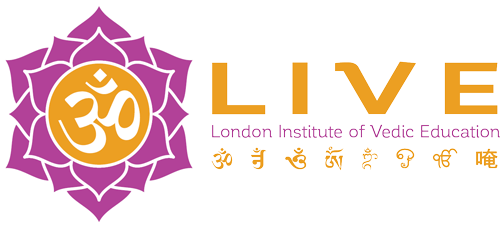
Srimad
Bhagavatam
The Srimad Bhagavatam is also know known as the Bhagavata Purana. The Bhagavatam is Sri Vyasadeva’s commentary on all the Vedanta philosophy. It brings to light all the different aspects of the Absolute Truth, but especially the personal characteristics of Sri Krishna as the final conclusion of all Vedic understanding. It does not elaborate on worship of the other devatas or on rituals that award various temporary material benedictions as do some of the other Vedas and Puranas. Therefore, the Bhagavatam completely transcends all other philosophical viewpoints of the Vedic literature. “This Bhāgavata Purāṇa is as brilliant as the sun, and it has arisen just after the departure of Lord Kṛṣṇa to His own abode, accompanied by religion, knowledge, etc. Persons who have lost their vision due to the dense darkness of ignorance in the Age of Kali shall get light from this Purāṇa.” (SB 1.3.43)
Canto 1: Creation
In the First Canto of the Srimad Bhagavatam, in the meeting of Suta Goswami with the sages at Naimisaranya over 5000 years ago, the universal form of Bhagavan is described. The virtuous stories of Vyasadeva, the Pandavas, and Parikshit are narrated there [in the meeting] in detail. The reign of Kali and how Parishit was curse to die in 7 days is also described.
CANTO 1 Lectures
CANTO 1 pdf downloads
Canto 2: The Cosmic Manifestation
In the Second Canto, the conversation between Parikshit Maharaja and Sukadeva Goswami describes two types of creation (primary & secondary), and the conversation between Brahma and Narada describes the nectar of the Lord’s activities. Vyasadeva also describes the characteristics of the Puranas and the process of creation.
CANTO 2
Canto 3: The Status Quo
The Third Canto tells of the meeting between Vidura and Maitreya. It has a section on creation and ends with descriptions of Brahman and Paramatma. The Third Canto also describes the battle between the Lord and demons such as Hiranyakashipu and Haranyaksa as well as the Sankhya philosophy of Lord Kapiladeva.
CANTO 3
Canto 4: The Creation of the Fourth Order
Beginning with the story of Sati and Lord Shiva as well as the virtuous story of Dhruva. It also narrates the virtuous stories of Prithu and Pracinabarhishat, and the instructions of Narada to the Pracetas and descriptions of the visarga [the secondary creation, by Brahma and others].

